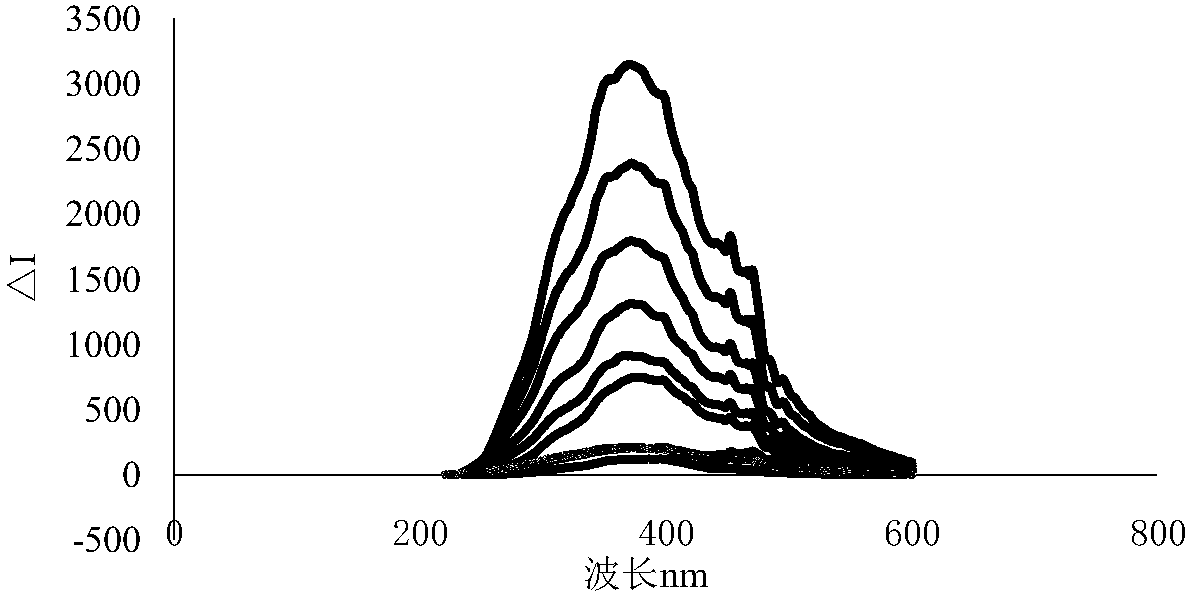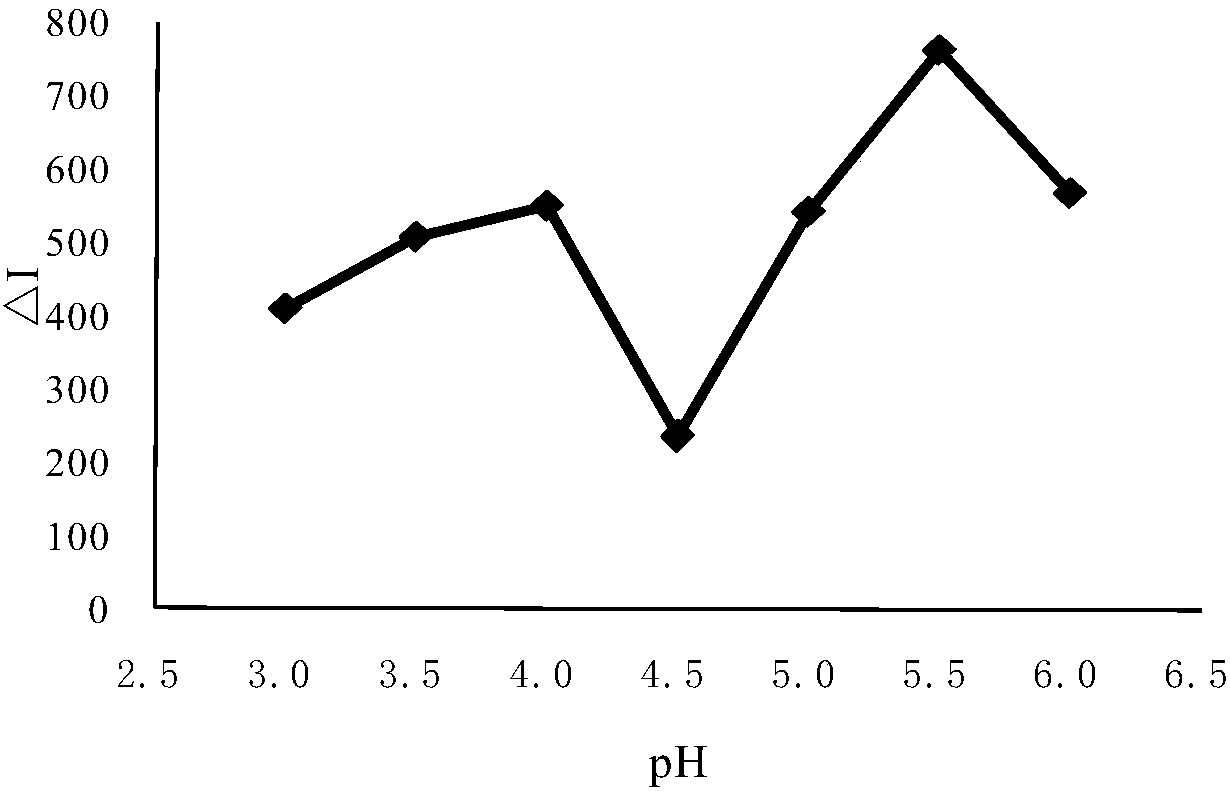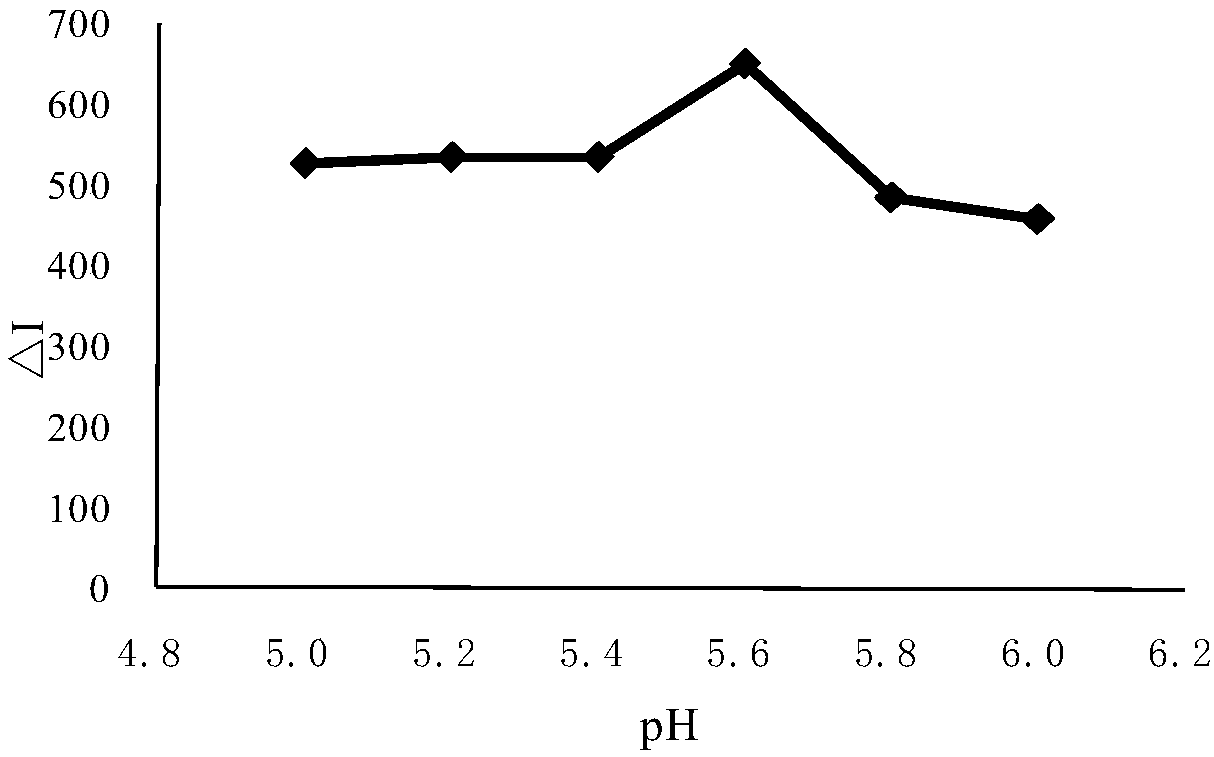Method for determining chitosan content by resonance Rayleigh scattering method sensitized by sodium dodecyl sulfate
A technology of sodium dodecyl sulfate and resonance Rayleigh scattering is applied in the field of macromolecular detection, which can solve the problems of complicated operation technology and enhanced resonance scattering intensity.
- Summary
- Abstract
- Description
- Claims
- Application Information
AI Technical Summary
Problems solved by technology
Method used
Image
Examples
Embodiment
[0069] A method for measuring chitosan content by the resonance Rayleigh scattering method of sodium lauryl sulfate sensitization, it may further comprise the steps:
[0070] 1) Draw the standard curve of the chitosan concentration of ΔI and different molecular weights
[0071] Add 1.0mL chitosan standard solution with a certain concentration gradient, 1.0mL citric acid-sodium citrate buffer solution with pH=5.5, 1.0mL sodium dodecyl sulfate anion surface with a concentration of 0.086mol / L in the 10mL colorimetric tube Active agent solution, and 1.0 mL concentration of 1.0 x 10 -4 For the mol / L amaranth solution, use three times distilled water to make up to the mark, shake well, place in a water bath at 80°C for 10 minutes, cool to room temperature, take 1ml of the mixed solution and add it to a quartz cuvette, and put it in a F-2500 fluorescence spectrometer Photometer, with λ ex =λ em Carry out synchronous scanning, record respectively the resonance scattering intensity ...
PUM
 Login to View More
Login to View More Abstract
Description
Claims
Application Information
 Login to View More
Login to View More - R&D
- Intellectual Property
- Life Sciences
- Materials
- Tech Scout
- Unparalleled Data Quality
- Higher Quality Content
- 60% Fewer Hallucinations
Browse by: Latest US Patents, China's latest patents, Technical Efficacy Thesaurus, Application Domain, Technology Topic, Popular Technical Reports.
© 2025 PatSnap. All rights reserved.Legal|Privacy policy|Modern Slavery Act Transparency Statement|Sitemap|About US| Contact US: help@patsnap.com



